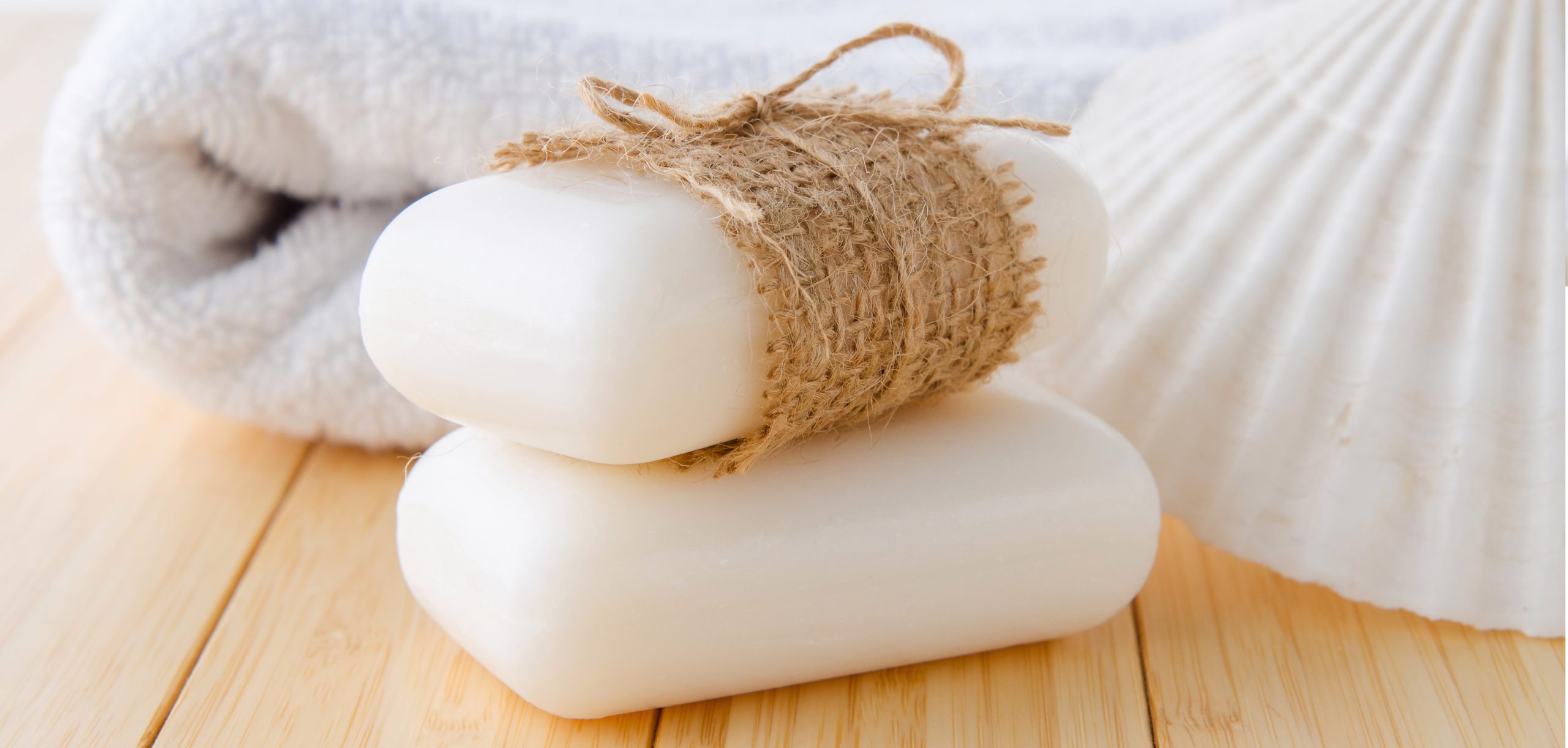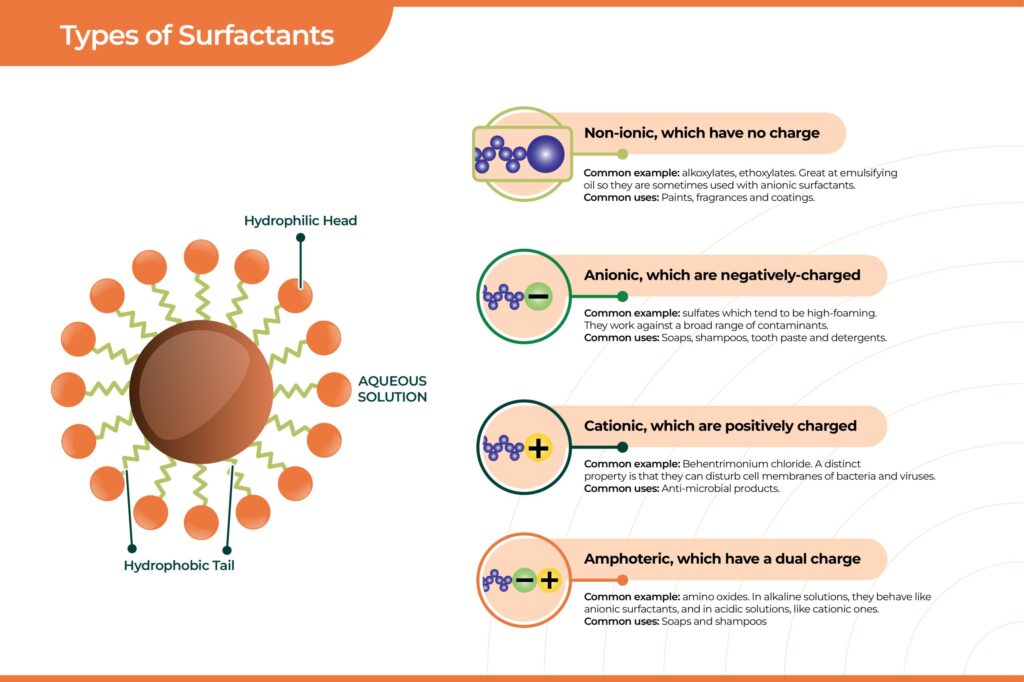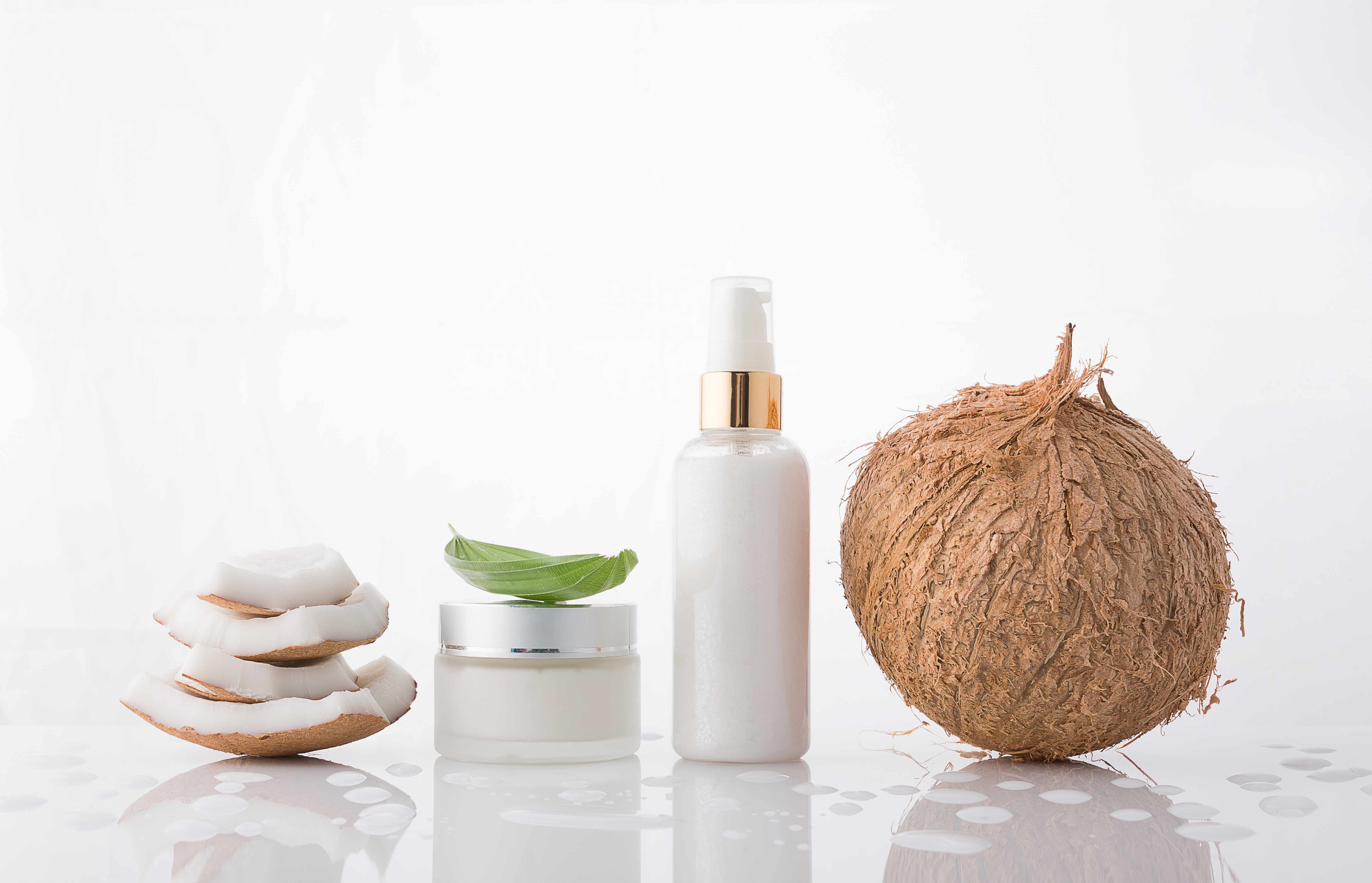What Are Surfactants and How Do They Work?
Surfactants, short for “surface active agents,” are key components used in a wide range of household, cosmetic, and self-care products. These substances have some unique chemical and physical characteristics that make them critical for these products. They have hydrophilic (water-loving) and hydrophobic (water-hating) parts. They also reduce surface tension. This property allows them to trap air, thereby creating foam.
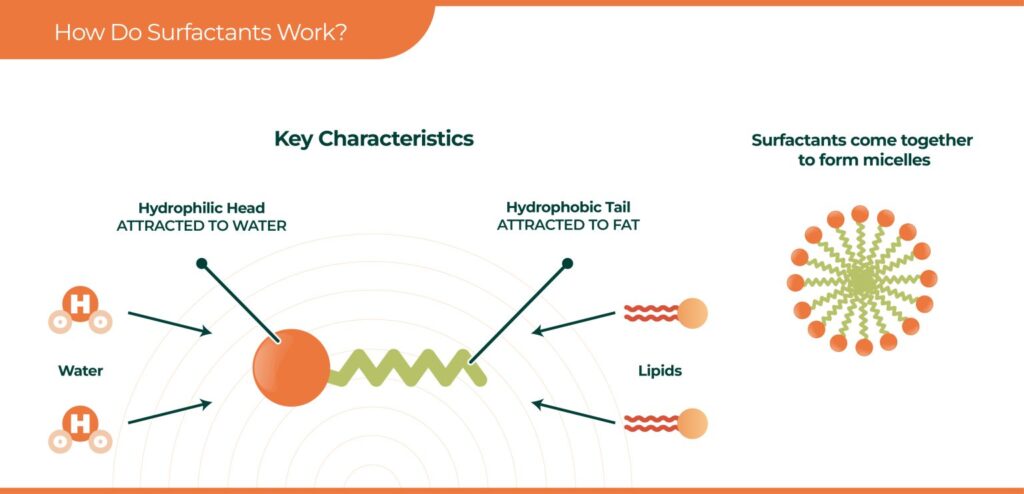
Surfactant molecules clump together to form a structure known as micelles. In a micelle, the water-loving part faces out while the water-hating part faces inwards.
The water-loving parts pull contaminants such as dirt or grease away while the water-hating parts suspend them within the structure.
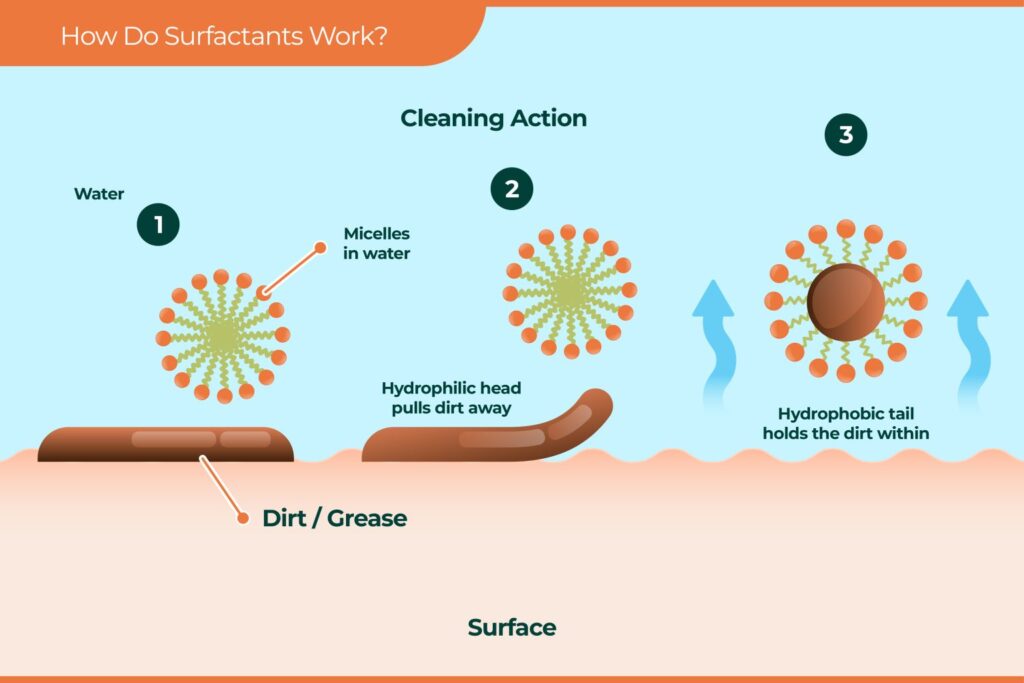
Common Surfactant Types
There are four main types of surfactants that vary based on the electrical charge of the water-loving part.
What Are SLS and SLES?
Sodium lauryl sulfate (SLS) and sodium lauryl ether sulfate (SLES) are two common surfactants that belong to the anionic type, where the charge on the water-loving part is negative. Musim Mas produces them, from plant-based sources such as palm and coconut, known as Sodium Coco Sulfate (SCS) – a close cousin of SLS. Other manufacturers may produce petroleum-based SLS and SLES. They have a broad range of applications that vary depending on formulation with other substances and their concentration. They are affordable, safe, and effective for cosmetics, shampoos, soaps, toothpastes, and household cleaners.
The combination of “water-loving” and “oil-loving” in one molecule enables surfactants such as SLS and SLES to be used to mix liquids that otherwise would not mix; a process called emulsification. They are particularly good at pulling impurities off surfaces. That is why SLS and SLES are commonly used in personal and household care and have been approved by the American Federal Drug Authority (FDA) for such use.

Are SLS and SLES Safe for Skincare?
Their popularity has led to speculation that SLS is cancer-causing, although there is no scientific basis for such claims. However, a small percentage of individuals may experience some form of skin irritation as SLS might irritate the outer layers of the skin. To cater to such needs, some products are formulated with sodium laureth sulfate (SLES) which is a milder type of surfactant.
A study published in the International Journal of Toxicology found that SLS is not harmful for its intended uses – for brief topical uses on the skin such as soaps and shampoos. Stay-on products like lotions should be limited to a 1% concentration.[1]
However, there is a carcinogenic claim for some SLES in particular. Some SLES products might be contaminated with 1,4-Dioxane, a manufacturing by-product that is classified by the International Agency for Research on Cancer as a Group 2B carcinogen “possibly carcinogenic to humans.”
Musim Mas’ SLS and SLES products are listed with CleanGredients® as part of the U.S. EPA’s Safer Choice program. Musim Mas’ Low 1,4-Dioxane SLES helps our customers remain compliant with their formulation, in addition to FDA’s regulations for cosmetics. Our MASPHATE® SLS range complies with USP and EP monographs.
Are SLS and SLES Bad for the Environment?
There are environmental concerns for SLS and SLES-based products that are derived from petroleum, as it is a fossil fuel. However, Musim Mas’ products are derived from plant-based sources such as palm and coconut. Sold under the MASPHATE® brand, Musim Mas offers SLS, SCS, and SLES that meet the needs and formulations of the world’s leading skincare and household care manufacturers.
Musim Mas’ MASPHATE® products are also made from GMO-free palm oil and coconut and are available in various product certifications such as local vegan standards. The group has also achieved 100% certification against the International Sustainability and Carbon Certification (ISCC) for all upstream operations and mills, having met the strictest levels of environmental sustainability.
[1] https://journals.sagepub.com/doi/10.3109/10915818309142005


